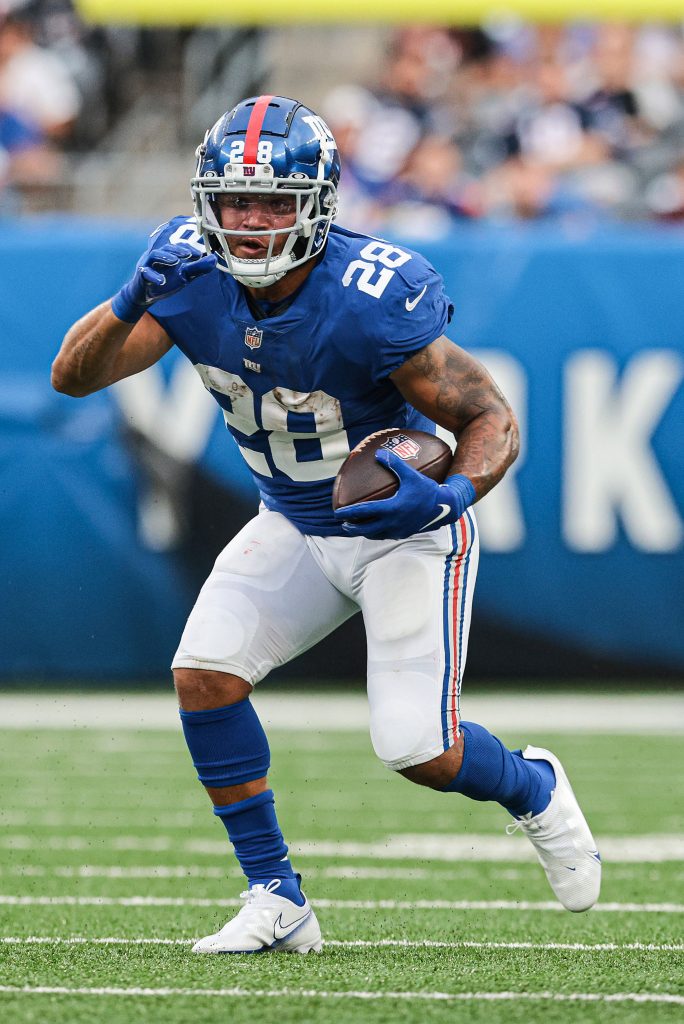For many in the United States, the first sign of fall is the start of football season. College students are back on campus and broadcasting networks are gearing up for the usual Thursday-to-Monday coverage. But the impacts of climate change have undeniably worsened in recent years, converging in a cluster of disasters each summer and fall — also known as prime football time.
With the U.S. West Coast fighting fires, and the country’s south and northeast drowning in storms, it begs the question of whether it might be time to reschedule football.
Right now, more than 42,000 Californians have been relocated due to fire that experts warn could burn for months. Last week in Louisiana, Hurricane Ida made landfall as a Category 4 storm, the strongest hurricane to hit in the state in over 150 years.
Neighbouring states have been similarly impacted: the smoke from wildfires has spread as far east as Maine, and Ida drenched the entire East Coast, leaving parts of New York City under water. Combined, these disasters could directly impact half a dozen NFL teams, and more than 20 NCAA Football Bowl Subdivision (FBS) programs.
While some minor adaptations have occurred, such as the Louisiana State (LSU) Tigers relocating temporarily to Houston, the University of Nevada Wolf Pack practising at Stanford and the Fresno State Bulldogs announcing a contingency plan in case players’ cleats melt on the turf due to heat, it’s clear bigger response strategies are needed when it comes to sport and climate change.
To date, the only hard-and-fast weather policy in college and professional football is for lightning and flooding. Despite losing high profile athletes like Korey Stringer (Minnesota Vikings) and Jordan McNair (University of Maryland) to heatstroke in 2001 and 2018, no rules have been adopted for heat.
The number of sports-related exertional heat stroke (EHS) deaths has more than doubled since 1975. American football has had the greatest number of EHS fatalities in the U.S.
According to the National Center for Catastrophic Sports Injury Research, heat illness was the third most common cause of sports-related fatalities in U.S. high school and college football players between 1990 and 2020.
The Center for Disease Control has identified heat illness as the leading cause of death among high school athletes across sports. Regardless of age and competition level, the first few weeks of training are when the greatest number of EHS and exertional heat illness events (like heat exhaustion and cramping) occur.
The NCAA and NFL have adopted guidelines for preventing and managing heat-related illnesses, which include a heavy focus on hydration and acclimatization. However the schedules they’ve adopted for football season places their athletes’ pre-season and early season training in the hottest months of the northern hemisphere’s calendar, even for northern states.
In 2017, half a dozen college football games in the FBS were cancelled, and several more postponed and relocated due to Hurricane Irma, which swept the Southeastern U.S.
That same year, at the NFL level, a Miami Dolphins game against the Tampa Bay Buccaneers was postponed several weeks, eliminating the players’ regular season break. Just one year later, Hurricane Florence rocked the eastern seaboard and caused several college and professional football programs to reschedule or cancel practices and games. In 2019, Hurricane Dorian did the same and in 2020, Hurricane Delta moved several college football games in an already limited season due to COVID-19.
On the U.S. West Coast, wildfires are burning more land each year, emitting smoke and polluting the air. Researchers established long ago that athletes are at higher risk of inhaling pollutants because during physical activity, more air is inhaled through the mouth, bypassing nasal filtration systems. Pollutants are also inhaled more deeply during play and can diffuse into the bloodstream or lodge themselves in the body’s air tracts. Poor air quality can also slow the game, impede referees’ decision-making abilities and cause discomfort for fans.
Over the years, the primary response to hurricanes and wildfires has been to delay or postpone games. In some cases, teams have relocated temporarily — uprooting athletes from their classes and families, moving games out of their home stadiums.
Football programs serve as a financial lifeline and cultural centrepiece for many colleges. With only eight home games per season and lucrative broadcasting deals on the line, it’s difficult for universities to afford the financial losses associated with cancellations.
Researchers at the University of Louisville identified the potential for athletic departments to anticipate natural disasters and purchase cancellation insurance to recuperate some of the losses. But after a hard financial year due to COVID-19, football programs nationwide are hesitant to spend extra money for insurance or forgo the profits of a game.
Pushing the season back by four weeks could avoid the bulk of these challenges, which typically surges in August and early September. While the football community may not like the idea of waiting a few extra weeks for Opening Day, and there will be implications on the back-end of the season, this solution would minimise in-season disruptions and risks to athlete health.
If leagues insist on playing bowl games over Christmas and New Year’s, they could consider cutting games from the season or playing through the exam period in December, which is usually quiet. Based on the injury rates in football generally, losing one or two games a season could also benefit player safety and prolong careers.
According to this most recent Intergovernmental Panel on Climate Change report, conditions are likely to worsen in the coming years, and with it, the future of American football will change. Football will be forced to adapt to the rapidly changing environment; nothing — not even sport — is safe from the effects of climate change.

